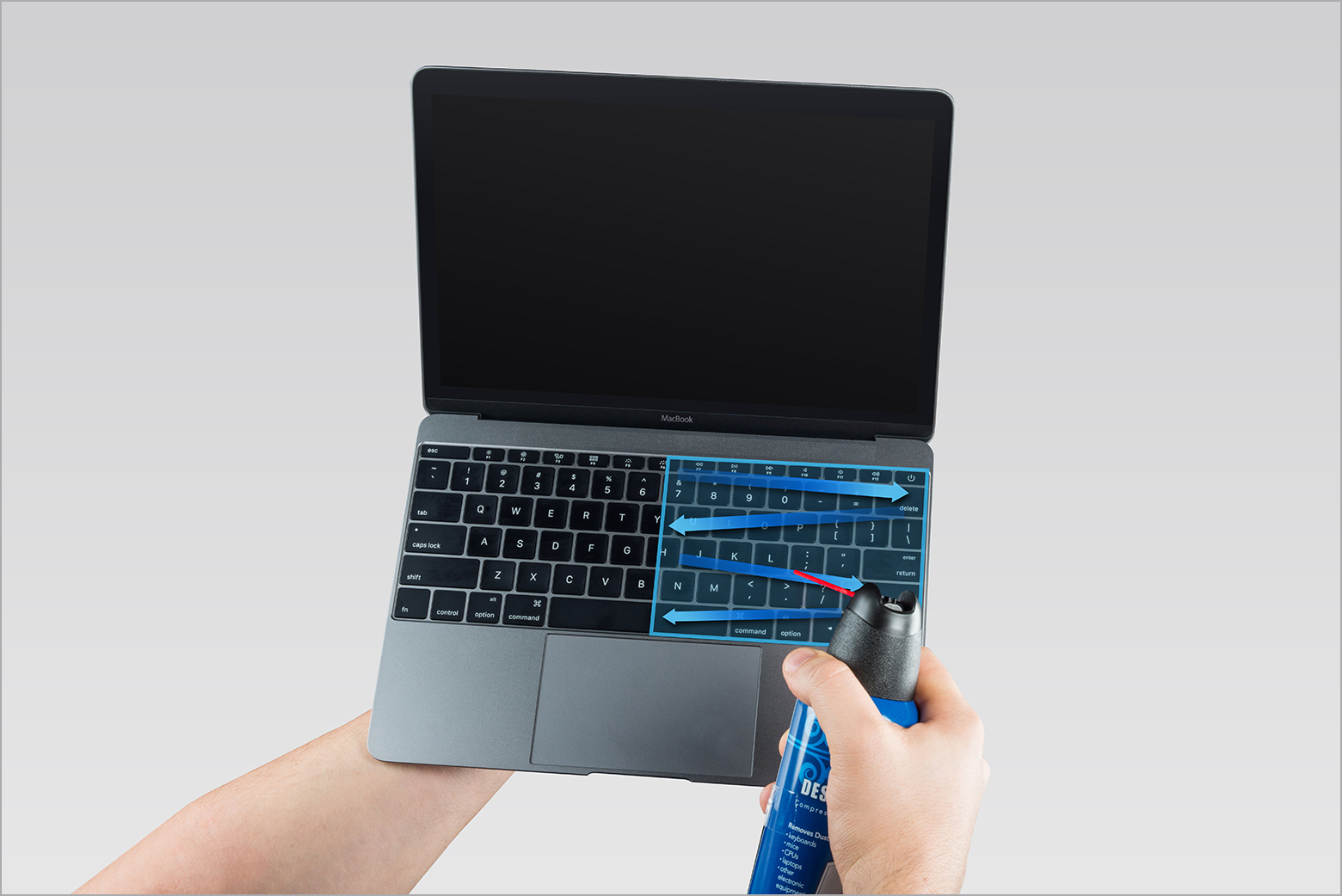The keyboard on your MacBook is unquestionably one of its most utilized parts. The performance and look of the keyboard can be impacted by the accumulation of dust, grime, crumbs, and other debris between the keys over time. Cleaning your MacBook keyboard regularly will increase its longevity and make typing more enjoyable. We’ll provide you with a step-by-step tutorial in this post on how to efficiently clean your MacBook keyboard.
How to Clean MacBook Keyboard
- Turn off your MacBook and disconnect it from any power sources before cleaning. This is essential for your security and to guard against accidental gadget damage.
- Turn your MacBook upside down and tap it lightly to remove any particles or loose material that may have accumulated between the keys. To clear the debris, you may alternatively use a can of compressed air.
- Use an electronic-safe cleaning solution or lightly dampen a soft microfiber cloth with water. To avoid moisture damage, make sure the material is not soaking wet.
- Wipe the keys one at a time, using little pressure to get rid of dust, smudges, and fingerprints. Top-to-bottom wiping is best, and the gaps between the keys should be taken into consideration.
- You can use a cotton swab gently dampened with water or an electronic-safe cleaning solution to clean the spaces between the keys. To get rid of any dirt, gently sweep the cotton swab along the crevices.
- You can gently massage the damaged region with a cotton swab dampened in isopropyl alcohol (at least 70% concentration) if you come across tenacious stains or sticky residue on the keycaps. Be careful not to apply too much force or fluids.
- Allow your MacBook keyboard to air dry entirely after cleaning it before turning it back on or shutting the lid. This will guarantee any moisture evaporation and guard against internal component damage.

What to Avoid When Cleaning MacBook Keyboard
- Avoid using excessive moisture, such as spraying cleaning agents straight onto the keyboard or using a towel that is drenched in water. The internal components of the keyboard might be harmed by liquid seeping in. Instead, softly mist a cloth or cotton swab with some water or a cleaning agent appropriate for electronics.
- Harsh chemicals: Steer clear of using harsh chemicals that might harm the keyboard’s surface or key labels, such as bleach, ammonia, or powerful solvents. Use water or mild cleaning agents made especially for electronics whenever possible.
- Avoid cleaning the keyboard with abrasive items like rough sponges, scouring pads, or stiff brushes. These might damage the keys’ look and operation by scratching them or the area around them.
- Unapproved cleaning agents: Steer clear of cleaning agents that aren’t designed for electronics. Some cleaning products for the home could include substances that might harm the keyboard or leave behind residue. Rely on suggested electronic-safe cleaning agents or a straightforward combination of water and mild dish soap.
- Cleaning with the MacBook turned on: Before cleaning the keyboard on your MacBook, turn it off and disconnect it from any power sources. The chance of unintended damage or electrical problems rises while cleaning with the gadget turned on.
- Use caution while using compressed air, even if it might help clear away loose debris. Use moderate pressure; applying too much pressure may shove dirt further into the keyboard or, if sprayed too closely, may harm the keys.
What to do When Water Spilled on your MacBook Keyboard
- Press and hold the power button on your MacBook until it goes off to quickly turn it off. This helps stop electrical problems and more harm.
- To ensure safety when cleaning, unplug all connected power sources or accessories from your MacBook.
- Turn your MacBook upside-down slowly to let any extra liquid drain from the keyboard. To stop the liquid from leaking deeper into the internal components, do this as soon as you can.
- Any moisture that is visible on your MacBook’s exterior should be carefully blotted with a soft, absorbent cloth or paper towel. Avoid rubbing, since doing so may distribute the liquid and may cause it to seep deeper into the device.
- Leave your MacBook in a well-ventilated, open space after blotting the surface to let it dry naturally. Avoid using fans or other heat sources since they may lead to thermal damage. It’s important to give your MacBook enough time to dry, usually for at least 24 to 48 hours, before attempting to turn it back on.
- You should wait to try turning on your MacBook or using the keyboard until you are certain it is entirely dry. While the keyboard is still wet, using it risks creating electrical shorts and severe harm.
Conclusion
Maintaining the functionality and lifetime of your MacBook keyboard requires routine cleaning. You may successfully clean your keyboard of dust, filth, and debris by carefully following the supplied step-by-step instructions, resulting in a pleasurable typing experience. Use the suggested cleaning products, be careful, and let your MacBook thoroughly dry before using it again.
